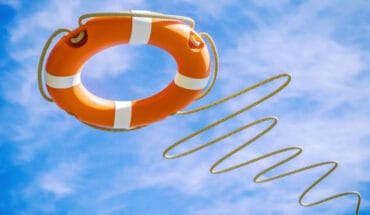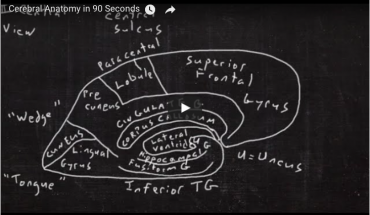1. ChokingIf a heavily pregnant person is choking, first see if they are able to cough and clear the obstruction herself.
If they can’t cough and are unable to speak, lean them forward, with your hand on their chest and swiftly apply up to 5 firm, hard back blows.
In the vast majority of cases this should dislodge the obstruction. If it hasn’t phone for an ambulance, explain that the patient is pregnant and ask their advice.
Giving abdominal thrusts could harm the foetus. You can try giving check thrusts above the foetus, or keep giving back blows and adhere to the advice of the ambulance team.
2. Fainting
Fainting and dizziness are very common in pregnancy, particularly in the first 13 weeks.
This can happen because of hormonal changes, that can also lead to the dilation of blood vessels and also because of low blood sugar. It is useful to keep a snack with you at all times.
Pregnant people are most likely to faint when standing up too quickly from a chair or out of a bath, but it can happen when you are lying on your back. This can be due to postural hypotension, when the blood vessels and brain are unable to adjust quickly enough when someone stands up. The relaxing of the blood vessels can also result in a lowering of the blood pressure, lying in a warm bath can further relax the peripheral blood vessels too and make fainting even more likely.
As the pregnancy progresses, the foetus can compress the inferior vena cava and some people find it more comfortable to sleep on their left hand side. The pressure on this major blood vessel can also make it more likely that a pregnant person may feel faint.
How to prevent dizziness and faintingDuring the second and third trimesters, you may get dizzy while lying on your back. This is because as your womb grows, it can put pressure on a major blood vessel leading to the heart. Many people find lying on their left hand side can reduce this.
There are some ways in which you can reduce dizziness:
- Lying on the left hand side
- Get out of bed/ chairs/ sofas slowly raising your head last
- Avoid very hot baths or showers
- Avoid standing for long periods of time
- Never skip meals. If you have morning sickness, eat small amounts of food often
- Drink plenty of fluids
- Avoid lying on your back
- Doing small amounts of physical activity often, to improve your circulation
How do you know if you might be about to faint?
Signs that you may be about to faint:
- Feeling light-headed
- Confusion
- Blurred vision
- Ringing sound in your ears
- Sweating or feeling cold and clammy
- Nausea
- Fast or unusually deep breathing
What to do if you feel faint
Ideally lie down as quickly as you can and raise your legs if possible.
If it doesn’t pass, lie down on your side.
Tell someone around you.
They should open a window if possible.
Do not try to move.
Loosen any tight clothing.
Do not eat or drink anything if you are feeling very dizzy or faint. However, as the dizziness starts to improve, drink some water and have a snack.
If someone heavily pregnant around you faints:
Gently put them on the ground. Roll them onto their left side and try and raise their legs.
Call 112 or 999 if they:
- Have not woken up after 1 minute (make sure they’re not on their back)
- Are having a fit, or experiencing convulsions or jerking movements
- Have injured themselves seriously
Stay with them until they wake up or help arrives.

3. Gestational diabetes
Gestational diabetes can cause high blood sugar during pregnancy. It can happen at any stage but it is most common during the second or third trimester.
It happens when your body cannot produce enough insulin.
Some people are more at risk
Anyone can develop gestational diabetes during pregnancy, but you’re more at risk if:
- You’re over 40
- Your BMI is over 30
- You previously had a baby who weighed 4.5kg or more at birth
- You’ve had gestational diabetes in a previous pregnancy
- 1 of your parents or siblings has diabetes
- You are of South Asian, Black, African-Caribbean or Middle Eastern descent (even if you were born in the UK)
- You have had a gastric bypass or other weight-loss surgery
If you are part of one of these groups, you will be offered screening for gestational diabetes during your pregnancy.
Symptoms
Those with gestational diabetes typically won’t show symptoms. It is usually picked up through screening.
However, symptoms may develop if blood sugar levels reach extremely high levels:
- Increased thirst
- Needing to wee more than usual
- Dry mouth
- Tiredness
- Blurred vision
- Genital itching or thrush
It’s really important to be aware of this condition and get screened. For most pregnancies, the gestational diabetes stops when the baby is born.
4. Eclampsia and pre-eclampsia
Pre-eclampsia is diagnosed when a pregnant person has high blood pressure and protein is detected in their urine.
Eclampsia is a life-threatening progression of this, where the person can develop seizures, and can lead to them losing consciousness.
Eclampsia is a rare but extremely serious condition and can be life threatening for the mother and foetus. Those with pre-eclampsia are monitored very closely and consequently eclampsia now affects less than 3% of people with preeclampsia.
What are the biggest risk factors for eclampsia?
You are more at risk for eclampsia if you:
- are pregnant with multiple births
- have an autoimmune condition
- are younger than 17 or older than 35
- have a poor diet or are obese
- have diabetes, hypertension or a kidney disease
- It is your first pregnancy
- You have a history of preeclampsia within your family
Symptoms
A pregnant person should be monitored closely and regularly have their blood pressure checked and urinalysis to ensure there is no protein in their urine. Generally pregnant people will have warning signs before having a seizure from eclampsia and these should be taken seriously and they should visit their midwife urgently:
- Severe headaches
- Difficulty breathing
- Nausea/ vomiting
- Trouble urinating or not urinating often
- Abdominal pain, especially on the upper right hand side
- Blurred vision, seeing double or loss of vision
- Swelling of hands, face or ankles
Diagnosis and treatment
Pre-eclampsia is usually initially diagnosed via regular visits to the midwife picking up a rise in the expectant person’s blood pressure and following this with a urine test to check for protein. The expectant person will then be followed up very closely to minimise the risk of them developing eclampsia.
5. Recovery position – lie on left hand side
If a heavily pregnant person is unconscious. Check for danger, Response, open their airway and check for normal breathing.
If they are breathing normally, ideally roll them onto their left hand side.

Left lateral tilt when giving CPR
If a pregnant person has collapsed and they are heavily pregnant in their third trimester, Check for Danger, check for Response, open the Airway and check for normal breathing. If they are unconscious and breathing normally, roll them onto their left hand side, keep checking they are breathing and phone an ambulance.
If they are unconscious and not breathing normally, with less than 2 breaths in a 10 second period, you will need to start CPR. Ideally, if you have another person assisting you with the CPR, they should support the uterus (the bump) whilst the patient is lying on her back. This will take the pressure of their vena cava and help them maintain blood flow to their vital organs.
If you haven’t got a second person, you can do help relieve the pressure on the vena cava by:
- placing a rolled-up blanket or wedge under the right side of their back
- manually tilting the person’s hips and shoulders to the left
About us
First Aid for Life provide award-winning first aid training tailored to your needs. Please visit our site and learn more about our practical and online courses. It is vital to keep your skills current and refreshed. We are currently providing essential training for individuals and groups across the UK. In addition, we have a great range of online courses. These are ideal as refreshers for regulated qualifications or as Appointed Person qualifications.
You can attend a fully regulated Practical or Online First Aid course to understand what to do in a medical emergency. Please visit or call 0208 675 4036 for more information about our courses.
- Sudden cardiac arrest in the young and the simple screening to avoid them - 1st July 2024
- Water safety: First aid for drowning - 1st July 2024
- Water safety this summer – a guide for children and parents - 1st July 2024






